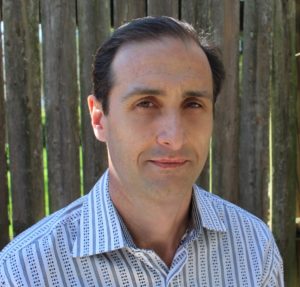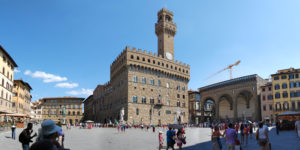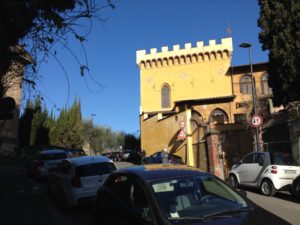J-Term: A Love Affair with Tuscany
This next installment in the J-Term series has been written by Enrico Cesaretti, Associate Professor of Italian. See the other J-Term blogs here.

From the many Northern European “Grand Tourists” who traveled to the Italian peninsula in search of warmer climates, famous art-works and other pleasures in the 18th and 19th century, to Thomas Jefferson’s close friendship with Tuscan statesman and doctor-farmer-businessman Filippo Mazzei (born in Poggio a Caiano, one among Charlottesville’s “sister cities”), to the current stream of tourists and students, Florence and the region of Tuscany have long been sources of unending fascination and appeal.
ITTR 3758 “Love Affair with Tuscany: Utopias and Beyond” examines the particular Anglo-American “love affair” with the city and the region in the light of the spatial notion of utopia. While Tuscany is mostly (and rightly) associated with being the cradle of the Renaissance, with picturesque, romantic landscapes, good food and excellent wine/oil-making, the region has also historically been (and remains) a place of conflict and factionalism. One needs only think of Dante’s Commedia during the Middle Ages, with its references to the clashes between Guelphs and Ghibellines, of the political intrigues and struggles for power during the reign of the Medici in the 15th and 16th century, or of the current debates on the “Disneyfication” of Florence’s historical centre, and the presence of immigrants.

Juxtaposing diverse discourses and narratives on/about Tuscany over the past couple of centuries (from foreigners as well as Italian natives) with direct encounters with the actual locations and “material texts” that inspired them (monuments, landscapes, socio-cultural institutions, people), this course ultimately aims to provide students with a more complete, detailed and contextualized picture of Florence, the Tuscan region and, by extension, the country and culture of Italy.
In particular, through readings, site-specific visits and physical immersion in the Tuscan landscape, we reflect on the socio-environmental impact of travel and tourism (including our own as privileged “study-abroad/grand tourists”), as well as on still pressing issues of cultural authenticity, identity, immigration and otherness. For example, while learning about the presence and the cultural impact on Florence of the Anglo-American community from the time of the Grand Tour until today, and the way it experienced the space of the city from a privileged perspective (i.e., the House of Elizabeth Barrett Browning, the Stibbert Museum and garden, the many foreign-owned villas on the hills overlooking the city), we discover also how Florence is currently experienced by those who didn’t choose it for its aesthetic or cultural value, but instead are there for very different reasons (i.e. the North-African immigrants at Piazza Indipendenza; the Chinese immigrant population in Prato etc).

By the end of the course, students are not only familiar with the tradition of the “Grand Tour” and the special role that Tuscany and Florence played in it, seeing how aesthetic considerations (ideas of the beautiful, the sublime, and the picturesque) may affect travel destinations, but they also have a better idea of the meaning of Foucault’s words when he stated that “the anxiety of our era has to do fundamentally with space . . . a great deal more than with time.”
- Having a Drink With Your Donkey: The Absurd in Antiquity
- What Happens to UVA’s Recycling? A Behind the Scenes Look at Recycling, Composting, and Reuse on Grounds
- Finding Your Center: Using Values Clarification to Navigate Stress
- UVA Club of Atlanta: Virtual Pilates Class
- UVA Club of Fairfield/Westchester: Cavs Care - Food Pantry Donation Drive
- UVA Club of the Triangle: Hoo-liday Party